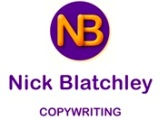Perhaps someone (your business coach, maybe) has told you that you need to write blogs. Well, how hard can that be? You can throw one together in a spare half hour.
Well, you can, but it’s not going to impress anyone — which, after all, is the primary reason for writing blogs. An effective blog needs to be carefully planned, structured and polished, if it’s going to be worth posting.
1. Planning Your Blog
Before you do anything else, you need to know what your blog is about and why you’re writing it. There needs to be one central point that it’s going to make. That doesn’t mean you can’t make other points too, but they should ideally be aspects of that main point.
It’s also best to know what length you’re aiming for. There are widely differing opinions as to the best length for a blog, but the choice you make should affect the pacing of what you write.
Finally, know who you’re writing for — and ideally this should be one person, real or imaginary. Trying to please everyone results in pleasing no-one, whereas if you aim everything at your ideal reader, anyone approximately like them should also appreciate it.
2. Approaching Your Blog
Once you’ve started writing, it’s very easy to wander off the subject, so make a list of the points you want to make — both your main point and any subsidiary points. Don’t necessarily refer to it while writing, but check at the end that you’ve covered everything on the list. If not — that’s what the second draft is for.
Speaking of which, many years ago I devised Blatchley’s Law, which states that anything you write has to go through at least three drafts:
- The first draft to get it wrong.
- The second draft to get it right.
- The third draft to get it perfect.
So, for the first draft, just get something down on the (virtual) page, because bad writing is easier to fix than a blank page. Then go to work on it.
In order to be able to structure your blog effectively, you also need to be clear what reaction you want from your reader. It might be purely to enhance your reputation, and that’s fine, but maybe you want the reader to call you, to download a free gift (allowing you to legitimately collect their contact details) or to sign up for a mailing list. But a blog shouldn’t normally be to sell — at least, not today.
3. Structuring Your Blog
Just like a story, your blog should have a structure, leading the reader through and making it impossible for them to stop reading. That includes a hook to get the reader engaged. Ideally, you want to begin by stating the issue or problem they might be facing in a way that shows you understand it — and then use the rest of the blog to offer suggestions or answers.
A wall of text can be off-putting, especially on a screen, so use any means you can to break the text up. One approach is to divide your blog into sections with their own subtitles, ideally each no longer than 200 words. This can also help your structure the ideas by making each section about one of the subsidiary points you identified.
Another way of breaking up text is to use bullet points, which can also help with organising your arguments. But don’t overdo it, or your whole structure could fall to pieces. One or two sets of bullet points would be ideal.
4. Making Your Blog Easy to Read
Many SEO experts (with some honourable exceptions) consider a blog to be merely an excuse to load in keywords. While keywords are important, they come second to making the blog readable — nowadays, Google actually penalises join-the-keywords exercises. If you’ve planned properly, most of your keywords should normally occur naturally.
To make your blog more readable, try to keep your sentences and paragraphs reasonably short. The sweet spot is around 15-25 words per sentence and 2-3 sentences per paragraph, but try to avoid having them too uniform. Longer sentences, on the other hand, can be effective in the hands of an expert writer, but most people tend to start rambling.
In general, try to avoid technical jargon. This depends on the audience, of course — if you’ve decided your ideal reader is an expert, fair enough — but generally only use technical language and acronyms that are essential. If you do use any, explain them, unless they’d be obvious to your reader (e.g. HMRC or GDPR for a business owner).
5. Completing Your Blog
If possible, finish with a call-to-action. This may not be appropriate if the blog’s purpose is purely to raise your reputation, but even then it might be possible to work a call-to-action in.
Check your spelling and grammar before you post your blog — but don’t rely too blindly on a spellchecker or grammar checker. Even the best ones aren’t always right, and if you rely on the built-in ones in MS Word, it can be potluck. Use the software as a back-up, in case you’ve missed anything, but also have a dictionary and a basic understanding of English grammar.
And, finally, before you let your blog go, get someone else to read it — preferably someone as much as possible like that ideal reader you identified. They can tell you if it makes senses, as well as whether it’s easy to read.
If there’s anything else you want to know about writing blogs, just ask in the comments.

